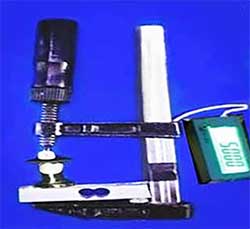Articles
Vol. 14 No. 1 (2022)
Influence of sintering technique on fracture load of monolithic zirconia with different thicknesses

Publisher's note
All claims expressed in this article are solely those of the authors and do not necessarily represent those of their affiliated organizations, or those of the publisher, the editors and the reviewers. Any product that may be evaluated in this article or claim that may be made by its manufacturer is not guaranteed or endorsed by the publisher.
All claims expressed in this article are solely those of the authors and do not necessarily represent those of their affiliated organizations, or those of the publisher, the editors and the reviewers. Any product that may be evaluated in this article or claim that may be made by its manufacturer is not guaranteed or endorsed by the publisher.
Received: 26 July 2021
Accepted: 11 October 2021
Accepted: 11 October 2021
682
Views
943
Downloads












